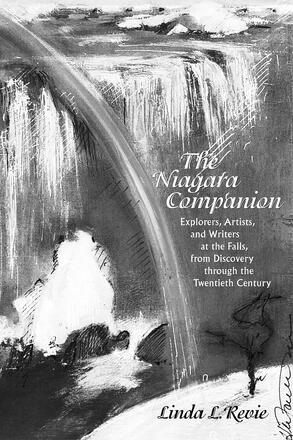
The Niagara Companion
Explorers, Artists, and Writers at the Falls, from Discovery through the Twentieth Century
Description
What is it about Niagara Falls that fascinates people?
What draws them to it? Is it love, obsession, or fear?
In The Niagara Companion, Linda Revie searches for an answer to these questions by examining the paintings and writings about the Falls from the late seventeenth century, when the first Europeans discovered Niagara, to the early twentieth century.
Linda Revie’s study considers how three centuries of representations are shaped by the earliest encounters with the waterfall and notes shifts in the construction of landscape features and in human figures, both Native and European, in the long history of fine art depictions. Travel narratives, both literary and scientific, also come under her scrutiny, and reveal how these chronicles were influenced by previous pictures coming out of Niagara, particularly some of the first from the seventeenth century.
In all of these portraits and texts, she notes a common pattern of response from the observers — moving from anticipation, to disappointment, to a kind of recovery. But in the end, there is fear. Even long after Niagara had become a tourist mecca, it was often drawn as a primordial wilderness — a place where civilization vies with wildness, artifice with nature, fear with control, the natural with the mastered. Throughout this history of images and narratives, as humans struggle to control nature, the notion of wildness prevails.
Those who want a deeper understanding of why Niagara Falls continues to fascinate us, even today, will find Linda Revie’s book an excellent companion.
Reviews
``There is interesting information on almost very page of The Niagara Companion.''
- Christoph Irmscher
``A visit to Niagara has always been much more than a walk in the park. For centuries, generations of writers, artists, scientists, and explorers have used their excursion to reflect and pontificate. Linda Revie is an admirable and erudite guide to their literary rambles.''
- Karen Dubinsky
``As I write this review, it has just been announced that Niagara Falls did not make the cut in Canada's 2004 list of nominations for World Heritage Site status. Why? Apparently, for the World Heritage Organization adjudicators, Niagara's sublimity is compromised by the intrusion of pragmatic technology and commerical exploitation. They should have read Revie's fine study.''
- Brian Osborne
``A fascinating and wonderfully readable evocation of how generations of artists have tried to understand the extraordinary phenomenon that is Niagara Falls. It should be in the backpack of every literate tourist.''
- Kevin McMahon
``The Niagara Companion is a well written and very well researched cultural analysis of artistic, literary, touristic, and scientific responses to on of the world's greatest natural wonders....As each chapter proceeds, and the authors and texts multiply, her analysis deepens in complexity. At the end of each of her three longest chapters--one on painters, the next on writiers and the last on scientific writers--she masterfully brings together and synthesizes an overview of each artistic or scientific approach.''
- Jeannette Sloniowski
``The Niagara Companion signals a new maturity to Niagara scholarship, the modern revival of which is less than two decades old. Incorporating insights from recent aesthetic, feminist, and travel theorists, Revie takes a fresh look at selected visitors and the pictures and texts they created. Her singular accomplishment is to show how Niagara's visitors -- freighted with gender, class, national, and aesthetic commitments -- nevertheless struggled to produce distinctive individual responses to the great cataract. Illustrating how they wrestled with commitments, conventions, and the reality of Niagara Falls, Revie complicates our understanding of these visitors but recovers for us a compelling sense of their humanity.''
- Patrick McGreevy